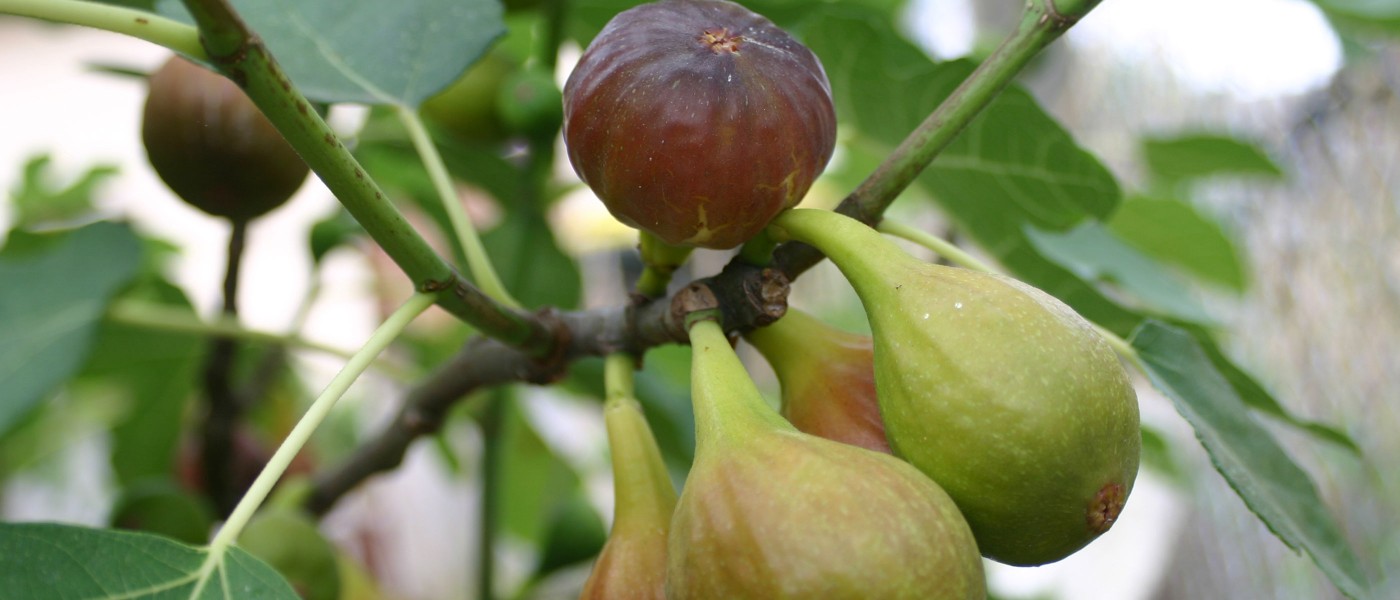Fig Trees for Small Backyards or Container Gardens
Figs (Ficus carica) may just be one of the best trees for edible landscapers and urban gardens. They produce an abundance of delicious sweet fruit while thriving amid brick and concrete in containers or small spaces, and provide bold, beautiful foliage in the garden. They are also virtually pest free and practically immortal.
I’m not the first to recognize the near perfection of figs. Figs have been cultivated for thousands of years and are thought to be among the earliest plants domesticated by humans. What our ancestors no doubt realized, and what new generations are rediscovering today, is that figs are an easy-to-manage tree that provides an abundance of luscious fruit.
Planting and Cultivating Fig Trees
Hardy in USDA Zones 7b through 11, figs can survive and indeed thrive in cooler climates when planted in the right location. In Brooklyn, figs appreciate the urban heat-island effect from pavement and buildings, which keeps their roots from freezing. Figs are sun-loving trees and do best in the Northeast when grown in heat-hoarding microclimates, such as near foundations where the heat from the building helps keep the soil warmer through winter or against a south-facing wall to benefit from the radiant heat.
Figs can also be grown in containers if they have winter protection. The container should be no smaller than five gallons and during colder weather needs to be moved into a protected area like an unheated garage or small shed where the temperature won’t fall below 30°F. Figs in unprotected locations can be wrapped to protect them from freezing temperatures and drying winds.
Read More: How to Wrap a Fig Tree to Protect It for the WinterUnlike many commercially cultivated fig varieties grown in the Mediterranean and California, which require a symbiotic relationship with fig wasps to produce fruit, common figs are parthenocarpic, able to produce edible fruit without pollination. This is because what we call the “fruit” is in fact an enlarged stem covering the flower.
Propagating More Fig Plants
Of course, nonfertilized fruit is seedless. Thankfully, fig tree propagation is easy, in part because of its suckering habit. By taking a division of the tree and planting it, you create a clone plant that can be passed from generation to generation.
One of the most common ways to propagate a fig tree is to prune it in fall and take several leafless, pencil-thick cuttings, bundle them, and bury them horizontally in the ground below the frost line. Over the winter the cuttings will callus and make roots. In the spring, dig up the bundle and insert the cuttings, rooted tip down, in the soil. Given even moisture and protection, top shoots will soon appear and eventually develop into a fruitful tree.
Figs can be kept small by pruning them as shrubs, allowing them to be grown in the smallest of backyard spaces—a boon for urban edible landscapers. The sap of certain figs can be a skin irritant, so be sure to wear gloves when pruning. The large, deeply lobed foliage of shrub-pruned figs looks great planted near other shrubs like rhododendrons and roses.
Harvesting Figs
Even better than its gorgeous foliage, of course, is the fruit. Figs vary in color from yellowish green (called white figs) to copper, bronze, and dark purple. The flesh can be pink, tan, or a soft white. There are several hardy cultivars that do well in cooler climates, including Ficus carica ‘Brown Turkey, which has medium to large copper-colored fruit. ‘Celeste’ is another great choice, with smaller fruit that is a purplish-brown color. ‘Hardy Chicago’, which has small to medium fruit with purplish-brown skin and strawberry-pink pulp, also does well.
Many fig cultivars produce two crops per year. The first crop, called the breba, arrives in early summer on the previous year’s wood. The second crop forms in late summer or early fall and stems from the current season’s growth.
Knowing when to pick your figs is as simple as watching the fruit. As they ripen, figs droop from the tree and soften. The longer you can leave them on the tree the sweeter they will be. The best time to harvest is right before they fall from the tree, when you begin to see sugary syrup bead up on the skin. Figs do not last long once harvested, even when refrigerated, and are best eaten fresh off the tree or baked into cookies, tarts, jams, and other sweet treats.


